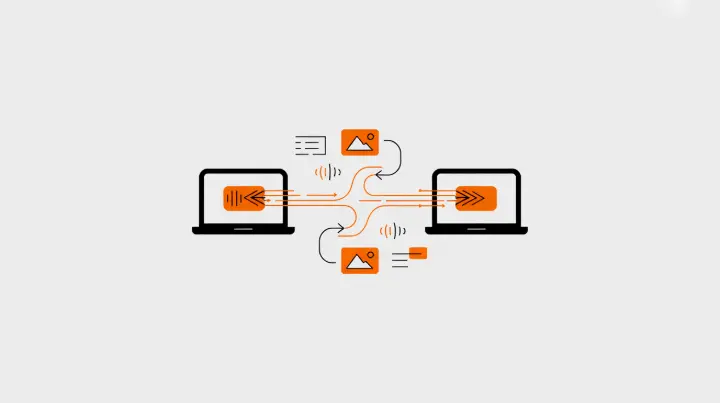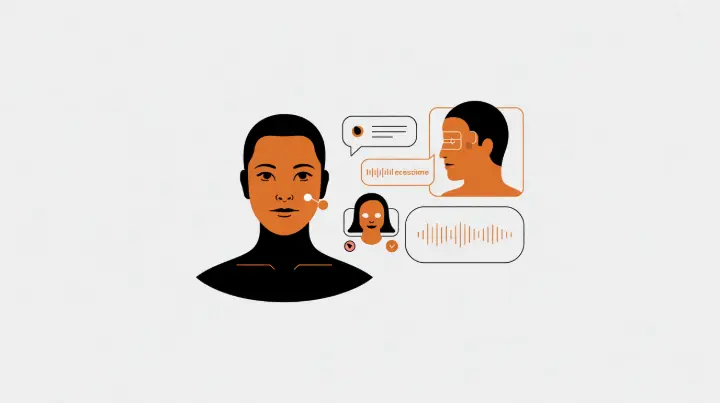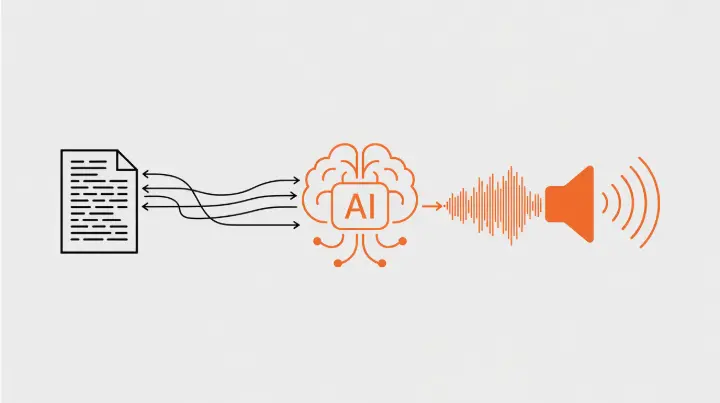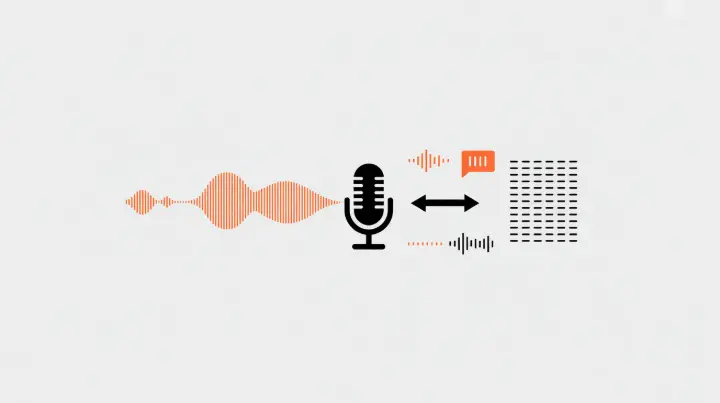Remember when every sales inquiry meant hiring another rep? Those days are vanishing faster than you might think. The sales world is experiencing something remarkable right now. Companies are discovering that the secret to scaling their sales operations doesn't lie in expanding their headcount but in embracing intelligent virtual sales assistants powered by AI.
Think about it. Your prospects are browsing your website at 2 AM. A potential client from Tokyo has questions during their lunch break. Another lead just landed on your pricing page and needs clarification immediately. Traditional sales teams simply can't be everywhere at once. But what if they could be?
The Rise of Intelligent Virtual Assistants
Virtual sales assistants aren't your typical chatbots that spit out pre-written responses and frustrate users. We're talking about sophisticated AI-powered representatives that can hold genuine conversations, understand context, and even pick up on buying signals. These digital assistants combine multiple cutting-edge technologies to create experiences that feel surprisingly human.
LiveKit now powers OpenAI's ChatGPT Voice Mode and serves over 100,000 developers who collectively handle more than 3 billion calls annually. That's not just impressive numbers. That's a fundamental shift in how businesses engage with prospects.
The magic happens when several technologies work together seamlessly. Picture an AI assistant that can see you through its camera, hear your questions clearly, understand exactly what you mean, and respond with a natural voice that doesn't sound robotic at all. That's the reality we're living in today.

LiveKit: The Infrastructure Powering Real-Time Conversations
Here's something most people don't realize. Behind every smooth virtual sales conversation, there's incredibly complex technology working at lightning speed. LiveKit provides the infrastructure for real-time voice assistants with predictable scaling costs, making it possible for businesses to deploy these systems without worrying about performance issues.
LiveKit leverages WebRTC technology and uses a Selective Forwarding Unit (SFU) that routes media streams efficiently while ensuring minimal latency and bandwidth optimization. Translation? Your virtual assistant responds instantly, without those awkward delays that make conversations feel clunky.
What makes LiveKit particularly powerful is its flexibility. LiveKit Agents don't lock you into specific providers, allowing you to change speech-to-text, language models, and text-to-speech components to match your use case needs. You're not stuck with one vendor's solution. You can mix and match the best tools for your specific situation.

WebRTC: The Foundation of Seamless Communication
Ever wondered how Google Meet or Zoom delivers such clear video and audio? That's WebRTC at work. Web Real-Time Communication enables peer-to-peer video streaming with ultra-low latency and direct connections, making it ideal for interactive use cases like virtual meetings and online classes.
For virtual sales assistants, this technology is absolutely critical. WebRTC ensures ultra-low latency and real-time engagement for live broadcasts and interactive experiences. When a prospect asks a question, they don't want to wait three seconds for a response. They expect conversation to flow naturally, just like talking to a human rep.
With over 8 billion devices expected to support WebRTC by 2025 and more than 3 billion Chrome browsers already supporting it with over 1.5 billion WebRTC audio/video minutes per week, this technology has become the standard for real-time communication. Your virtual sales assistant can reach prospects on virtually any device, anywhere in the world.
AI Avatars: Putting a Face to the Voice
Let's be honest. Text-based chat feels impersonal. Voice-only calls lack visual connection. That's where AI avatars step in to transform the experience. D-ID's Studio platform allows users to create digital people that can interact just like real humans, with options to select an agent's appearance, choose its voice or clone your own, and provide documents to augment its knowledge base.
AI avatars merge conversational AI with lifelike visual interfaces, using voice modulation, facial expressions, and emotional intelligence to replicate human-like behavior. They make eye contact. They nod when listening. They smile when appropriate. These subtle cues create trust and engagement in ways that text or voice alone simply cannot.

NVIDIA's Omniverse Avatar connects technologies in speech AI, computer vision, natural language understanding, and recommendation engines to create interactive characters with ray-traced 3D graphics that can see, speak, and converse on a wide range of subjects. The result? Virtual sales assistants that don't just answer questions but build genuine rapport with prospects.
Text-to-Speech: Giving AI a Natural Voice
Nobody wants to listen to a robotic monotone explain your product features. Modern text-to-speech technology has evolved dramatically. ElevenLabs offers natural and expressive voice generation with real-time audio streaming, allowing speech to begin playing almost immediately while text is being processed.
AI-driven TTS systems use deep learning models and neural networks that learn from large datasets of human speech to mimic various intonations, rhythms, and emotional expressions. Your virtual assistant can sound enthusiastic when discussing your newest features or empathetic when addressing a prospect's pain points.
The best part? Google Cloud TTS uses DeepMind's WaveNet technology to generate human-like voices with real-time audio streaming, making it useful for interactive solutions such as virtual assistants and chatbots. These aren't tomorrow's technologies. They're available right now, ready to transform your sales operations.

Speech-to-Text: Understanding Your Prospects
What good is a virtual assistant if it can't understand what your prospects are saying? Speech-to-text technology has become remarkably sophisticated. Deepgram's Nova-3 introduces real-time multilingual transcription handling code-switching across 10 languages with a 54% reduction in word error rate for streaming compared to competitors.
Self-learning AI models in 2025 can differentiate between homophones, adapt to various accents, and recognize domain-specific terminology. Whether your prospect has a thick accent or uses industry jargon, your virtual assistant understands them clearly.
This accuracy matters more than you might think. Imagine a prospect asking about "fifteen thousand dollar contracts" and your assistant hearing "fifty thousand." That's not just embarrassing. That's potentially losing a deal. Modern STT systems prevent these mishaps.

Slashing Customer Acquisition Costs
Now let's talk about what really matters to your bottom line. Every business obsesses over customer acquisition costs, and for good reason. According to ProfitWell, CAC for companies increased by approximately 60 percent between 2014 and 2019, though recent shifts to digital sales led to 30 percent higher acquisition efficiency.
Virtual sales assistants take this efficiency to another level entirely. Think about the math for a moment. A human sales development representative costs $60,000 to $80,000 annually when you factor in salary, benefits, training, and office space. They can handle maybe 50-100 calls per day. A virtual assistant? It can manage hundreds of simultaneous conversations at a fraction of the cost.
AI helps lower CAC by optimizing marketing efforts through data-driven insights, analyzing customer data to identify patterns and predict behavior, allowing targeted campaigns with personalized content that improves conversion rates. Your virtual assistant learns from every interaction, constantly improving its ability to qualify leads and identify serious buyers.
Response time plays a massive role here too. Studies show that the odds of qualifying a lead drop dramatically with each passing minute after initial contact. Your virtual assistant responds instantly, engaging prospects at the peak of their interest. No more leads going cold because someone called back two hours later.
Sales Qualification That Actually Works
Let's get real about sales qualification. It's tedious work that burns out even your best SDRs. They ask the same questions dozens of times daily. They deal with unqualified leads who waste their time. They miss promising prospects because they're busy with a long call.
Virtual sales assistants excel at exactly this type of work. They engage every single website visitor with the same enthusiasm, whether it's their first conversation of the day or their five-hundredth. They ask consistent qualifying questions, probe deeper when they detect buying signals, and gracefully disengage from tire-kickers.
AI-powered bots can engage leads early and even qualify them before reaching a salesperson. Your human sales team receives only qualified, interested prospects who are ready for a real conversation. No more wasting time on "just browsing" visitors or researching students.
The data collection happens automatically too. Your virtual assistant records every interaction, notes prospect concerns, identifies objections, and builds a complete picture before handing off to your human team. Your sales reps walk into conversations fully prepared, armed with context that helps them close deals faster.
Reducing Operational Expenses Across the Board
The cost savings extend far beyond just replacing headcount. Training new sales reps takes weeks or months. They need to learn your products, understand your messaging, master your CRM, and develop their pitch. Virtual assistants? Update the AI model once, and every instance immediately knows the new information.
Chatbots and virtual assistants can handle routine customer inquiries without human intervention, freeing up resources for more complex tasks while providing 24/7 support. Your prospects get immediate answers at 3 AM. Your human team focuses on high-value activities like closing deals and nurturing key accounts.
Management overhead drops significantly too. Virtual assistants don't need performance reviews, coaching sessions, or motivation. They don't take vacation days or call in sick. They don't have interpersonal conflicts or require mediation. A small technical team can oversee thousands of virtual assistants simultaneously.
Infrastructure costs become variable rather than fixed. You're not building out office space or purchasing equipment for a growing team. You're scaling cloud resources up and down based on actual demand. If you have a surge in traffic, your virtual assistants handle it seamlessly. When things slow down, you're not paying for idle capacity.
The Human Touch Hasn't Disappeared
Here's something important that often gets lost in discussions about AI. Virtual sales assistants aren't replacing human sales teams. They're liberating them to do what humans do best.
Your top sales reps shouldn't be spending hours qualifying leads or answering basic questions about pricing and features. They should be building relationships, navigating complex negotiations, understanding nuanced customer needs, and closing significant deals. Virtual assistants handle the routine work, so your human team can focus on activities that actually require human judgment and emotional intelligence.

The handoff experience matters tremendously. When your virtual assistant qualifies a prospect and connects them with a human rep, that rep has complete context. They know everything the prospect asked about, what concerns they raised, and what features interested them most. The conversation continues seamlessly, building on the foundation the virtual assistant established.
The Competitive Advantage Is Real
Companies embracing virtual sales assistants are gaining significant competitive advantages right now. While competitors struggle with high CAC and slow response times, early adopters are engaging prospects instantly, qualifying leads efficiently, and closing deals faster.
The technology is mature and proven. The infrastructure is reliable and scalable. The ROI is measurable and compelling. The question isn't whether virtual sales assistants will become standard in sales operations. The question is whether you'll lead the transition or scramble to catch up later.
Forward-thinking businesses recognize that this technology represents more than cost savings. It's about creating better experiences for prospects, empowering sales teams to work smarter, and building scalable operations that can grow without proportionally increasing headcount.
Your prospects expect immediate responses. They want personalized attention. They appreciate natural conversations. Virtual sales assistants, powered by LiveKit, WebRTC, AI avatars, TTS, and STT technologies, deliver all of this while dramatically reducing your customer acquisition costs and operational expenses.
The future of sales isn't choosing between human touch and technological efficiency. It's combining both to create something better than either could achieve alone. Virtual sales assistants are making that future a reality today.